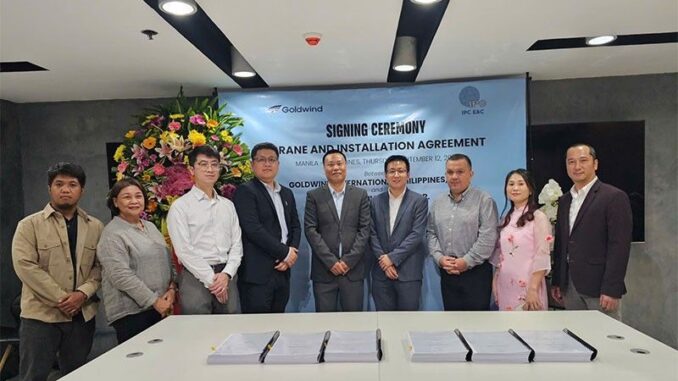
MANILA, Philippines — IPC E&C Philippines Corp. and Goldwind International Philippines Inc. have signed an agreement to supply and install crane equipment for the Kalayaan 2 onshore wind farm in Luzon.
The signing ceremony was held at the IPC E&C Philippines office in Manila on Sept. 9.
The Philippines boasts ample potential for wind energy, with the greatest wind resources in northern and central areas, such as Batanes and Babuyan and north-central Luzon. Wind speeds at these sites range from 6.4 meters per second (m/s) to 10.1 m/s. With such huge potential for wind farm development, the Philippines has captured the attention of renewable energy (RE) developers.
The Department of Energy has set a goal to triple its wind power from 3.1 percent to nearly 12 percent from 2024 to 2030. The government has also issued policies to facilitate this goal, such as feed-in tariffs, the Philippine Energy Plan 2020 to 2040 and the Philippines Energy Efficiency Roadmap 2017 to 2040.
The Kalayaan 2 onshore wind farm project is being invested in by Laguna Wind Energy Corp., which is owned by The Blue Circle and Acciona. With a capacity of 100.8-MW, the project generates about 300-million kWh/year. It features 17 Goldwind wind turbine towers, with a capacity of six-MW per turbine, tower heights of 110 meters and blade diameters of 165 meters.
IPC E&C Philippines Corp. will act as the contractor to install and supply crane equipment for the entire project. The project is expected to reach commercial operations in 2026.
The successful signing ceremony serves as a testament to IPC Group’s role as an engineering, procurement and construction contractor for Vietnam’s leading RE projects. IPC Group’s new business strategy is to extend its reach to international markets and tap into offshore wind power projects.
IPC Group is the first Vietnamese company to win a bid to construct and install wind turbines in an international and demanding market like the Philippines. This marks a proud milestone for both the IPC Group and Vietnam’s energy industry.
Previously, only European companies were capable of constructing RE projects in the Philippines.


Be the first to comment